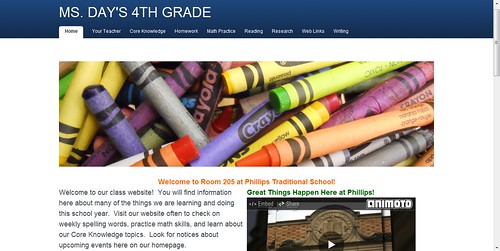Focus Question: How would you describe the impact of
communications technologies for teachers and students?
Communication technologies allow the students and
teacher, as well as the parents, to be on the same page about information
pertaining to their classroom. Email and text messaging allows electronic
conversations and communications to occur. This is a quick and easy way to ask
questions and bring up concerns. Classroom websites are a great source for
parents and students. If they want to know what is going on in the classroom,
they can all go to the same place. Blogs and online discussions encourage open
communication about a wide variety of topics. Wiki’s are a great collaboration
option. This allows students and teachers to work together in creating an
online resource. All of these media technologies are used to enhance
communication inside and outside of the classroom. These technologies let
students share their ideas and information with their peers.
Digital Dialog 8.1:
1. In my opinion, texting is a popular way of
communication because of how convenient it is. You can be sitting at your house
in Florida and text your friend in Italy within a second. Some people are more
shy and reserved in person, and communicating through texting is easier for
those people.
2. Reading skills may be enhanced through texting
because of the constant reading and interpreting that occurs. Writing skills,
however, are lacking since texting became popular. Abbreviations and the shortening
of phrases and words are making their way into classroom assignments and
papers. Unfortunately, people are using their texting language in inappropriate
situations. I personally write out each word and phrase how it is supposed to
be written. I make sure that I am grammatically correct while texting. I have
not, and will not, allow texting to hinder my writing skills.
3. Teachers are going to have to focus on the
importance of grammar and spelling as texting becomes an issue in writing
skills. Some of my professors have reiterated that we are not allowed to use
texting language within research papers. I thought that was common sense, but apparently
it is an issue in classrooms today.
As technology has become more prominent
in our daily life, we have started to use it as forms of communication.
Communication technology that is used in the real world can also be used in a
classroom setting as well. Teachers can use a multitude of programs as a way to
communicate with their students and their parents. These programs such as
email, texting, bogs, and online discussions, allow students to expand their
learning and exchange information between their peers. Teachers can communicate
through synchronous or asynchronous communication. Synchronous is immediate.
Cell phone conversations through texting or voice calls are a quick and efficient
way to communicate. Asynchronous has a bit of a delay. Reaching a professor through canvas is an
example of this.
In this chapter, we learned how to integrate electronic communications into teaching. Throughout my years in school, I have seen my teachers use these. I have had to complete many discussion posts online to engage learning outside of the classroom. This blog post is another example of that. I really like the idea of sharing information with the families of the students in your classroom. A class website is a one-stop-shop for all parents to receive the same information and stay updated with what is going on. Keeping the families involved makes it more enjoyable for everyone. Below is an example of a classroom website for a 4th grade class. Teachers can use Facebook and Twitter to create classroom pages as well. These pages can be private and only available for certain people.
In this chapter, we learned how to integrate electronic communications into teaching. Throughout my years in school, I have seen my teachers use these. I have had to complete many discussion posts online to engage learning outside of the classroom. This blog post is another example of that. I really like the idea of sharing information with the families of the students in your classroom. A class website is a one-stop-shop for all parents to receive the same information and stay updated with what is going on. Keeping the families involved makes it more enjoyable for everyone. Below is an example of a classroom website for a 4th grade class. Teachers can use Facebook and Twitter to create classroom pages as well. These pages can be private and only available for certain people.
New Class Website, a photo by BarbaraLN on Flickr.
Resources:
Maloy, Robert, Verock-O’Loughlin, Ruth-Ellen, Edwards, Sharon A., and Woolf, Beverly Park (2013). Transforming Learning with New Technologies. 2nd Edition. Boston, MA: Pearson Education, Inc.

Connection is vital in today's world and all of the examples you provided have their 'place' in making it happen. As you point out, there are some that are more appropriate than others in various situations. Thus, we still need to model and teach the polite and relevant protocol as sometimes the use of communication tools is provided only through peers and/or the 'street'.
ReplyDelete